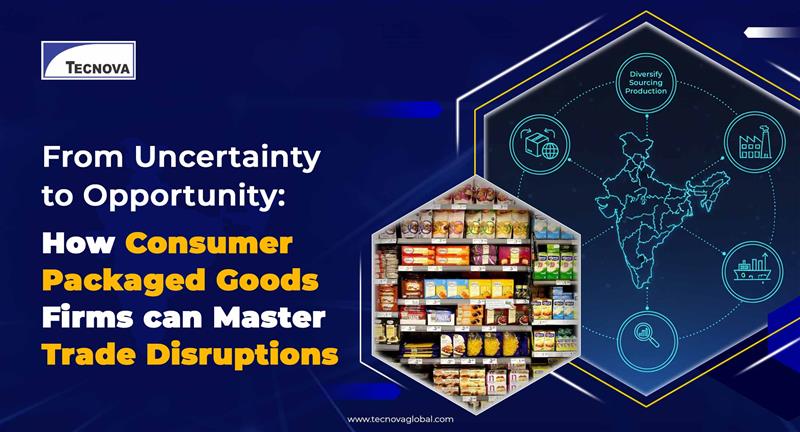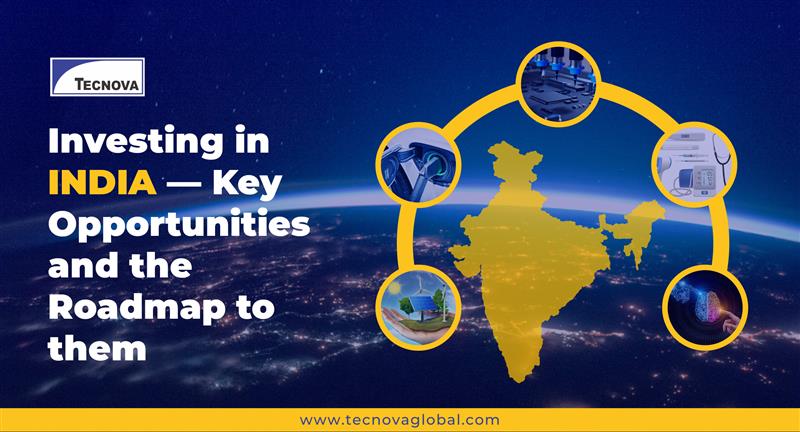Why Global Device Makers Are Accelerating Local Component Sourcing in India
India is rapidly emerging as one of the world’s most competitive electronics manufacturing hubs, projected to reach USD 282 billion in domestic production by 2030. As global markets push for supply-chain resilience, device makers across the USA, EU, and the UK are accelerating their shift toward local component sourcing in India.
Strengthened by favorable government policies, expanding ESDM capabilities, and a fast-maturing component ecosystem, India is becoming a strategic destination for sourcing, assembling, and manufacturing electronics at scale.
For global OEMs looking to expand or deepen their India footprint, local component sourcing is no longer optional — it’s a competitive necessity shaping the next decade of global manufacturing.
How Tecnova Helps Global Businesses Build a Strong Local Sourcing & Manufacturing Strategy in India
As one of India’s leading market entry and expansion firms, Tecnova enables global electronics and device makers to navigate the complexities of India’s fast-growing component ecosystem. From identifying reliable local suppliers to setting up manufacturing units, Tecnova provides end-to-end support that ensures seamless, compliant, and cost-efficient market expansion.
With deep on-ground intelligence, supplier mapping expertise, regulatory guidance, and operational execution capabilities across key electronics clusters, Tecnova helps global OEMs accelerate localization, strengthen supply chains, and establish sustainable growth models in India.
Do you know that India’s domestic production is projected to surge to USD 282 billion by 2030?
Local manufacturing in India is on the rise, with consumer electronics, mobile phones, and semiconductors at the forefront of this growth.
A recent report reveals that a top global electronics company is not only sourcing parts locally but also manufacturing components for its devices in India. Thirty-five capital equipment firms are working with this tech giant to create the tools and machines required for device manufacturing.
This shift mirrors a strong transformation in the manufacturing of local components in India. Let us explore the reason behind this shift in this blog.
4 Reasons behind the shift of Global Brands to Local Components in India
1. Reduced import risk
Global disruptions, such as trade barriers and export restrictions, are threats to supply chains. These disruptions can lead to delays and shortages. By locally sourcing components, device makers can reduce exposure to these risks and scale their manufacturing.
A leading contract manufacturer invested USD 32 million for the production of local components in India at its Bengaluru facility to avoid China’s logistical delays.
2. Lower logistics cost
Importing components comes with various additional costs, including customs duties, handling charges, and more. Local sourcing can eliminate all of these burdens, allowing businesses to grow within India.
For instance, the Indian Semicon Consortium got a deal to supply more than 5 lakh cameras by March 2026. They are planning to locally source the components of more than 50% of the entire order. The goal is to reach up to 90% localisation by 2030.
3. Regulatory pressure
Another reason for importing local components in India is to stay safe from regulatory pressure. Imports often require multi-stage approvals and certifications. Regional sourcing allows device makers to stay compliant without any hassle.
In 2024, the Indian Space Research Organisation (ISRO) Indian National Space Agency of offered to support automotive manufacturers in the production of vehicle sensors. Automotive sensors are mostly imported to India, and global regulatory pressures can cause delays.
The Indian space agency has a high-tech sensor manufacturing capacity that has been mostly used for making rocket sensors. This approach will take the Indian automotive industry one step closer to self-reliance.
4. Growing local supplier base
In recent years, India’s electronics supply chain has expanded. Local firms now supply parts such as enclosures, wiring, and even capital equipment spares to electronic companies to manufacture products within the nation.
Although this shift is not limited to electronics manufacturers only. A global furniture retailer is focusing on expanding its business in India with the help of local sourcing and a strong supply chain network. The company invested USD 1.18 billion with an aim to increase localisation up to 50% by 2030.
.jpg)
What role do Government policies play in Supporting this Shift?
The Government of India has launched various programs and policies to reinforce the manufacturing and export growth in India. Take a look:
1. Production Linked Incentive Scheme (PLI)
The scheme offers incentives to domestic manufacturing of components and electronics growth in India. Under this program, eligible manufacturers receive financial support for increasing production in India.
The Government of India has approved this PLI scheme for 14 sectors. This helps in creating an advantageous business environment in India for global players.
2. Make in India
Make in India, another GOI initiative, encourages local sourcing and manufacturing in 27 Indian sectors. This program aims to make India self-sufficient.
This initiative also provided access to a cost-effective talent pool. The easy access to tech talent and improved infrastructure allows international companies to diversify their supply chains beyond China.
Tracking the shift: How device makers are embracing Local Components in India?
The availability of local components in India has encouraged device makers to reshape their device manufacturing in India:
● Smartphone giants with local partnerships are exporting devices from India to Africa, West Asia, and the United States.
● Wearable tech brands have partnered with regional vendors for the supply of local product components like batteries and sensors.
● Semiconductor fabs are established in Gujarat to make India not just a consumer, but also a creator of advanced chips.
.jpg)
Why is Local Sourcing important for Device Ecosystems?
- With easy access to local R&D hubs and prototyping, device makers in India experience faster innovation and production cycles
- Since the products are locally manufactured, companies can produce customised solutions tailored to Indian needs
- The reduced dependency on the volatile foreign market allows brands to generate revenue and scale
- The trend of local sourcing creates numerous opportunities for employment and skill development.
What are India’s Structural strengths in Component Manufacturing?
- A skilled workforce with advanced manufacturing techniques
- Strong governmental support for infrastructure and innovation
- A large consumer base with over 1.12 billion mobile connections by early 2025
- Growing supplier network with diversity in high-tech and local components in India.
What Challenges must be Overcome?
Challenge 1: Many suppliers lack access to advanced facilities.
To mitigate this issue, the government is partnering with private firms to develop industrial parks and smart co-working spaces.
Challenge 2: There are areas with precise knowledge gaps.
Public and private enterprises are strategically collaborating with foreign tech firms to bridge the technological knowledge gap.
Challenge 3: Approval cycles for new units are time-consuming.
A single-window approval system will help new production units to complete all the regulatory processes in one place.
.png)
How can Tecnova help?
Tecnova is a leading India-entry consulting firm. Our team has decades of experience in helping device makers to enter and scale in this diverse marketplace.
We can help foreign manufacturers to:
● Connect with local suppliers
● Enter and expand their businesses in India
● Identify the right location to establish manufacturing units.
So, if you are new to the Indian market or an existing player interested in leveraging local sourcing, Tecnova will help you get a seamless transition to source local components in India, aligning with your long-term strategic goals.
References
https://shorturl.at/UDPqZ
https://shorturl.at/Sfq6B
https://shorturl.at/omic5
https://shorturl.at/f4Ht6
India’s Electronic Manufacturing Industry Poised for Takeoff - Tecnova
How Electronics Goods Industry Increase Market Penetration in India - Tecnova
Guide to Export Electric Components from India - Tecnova





.png)



.png)
.jpg)
.jpg)
.png)







.jpeg)

















.png)

.png)









.jpg)




.jpg)
























































